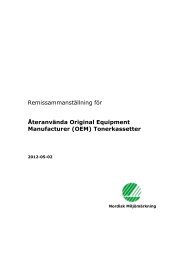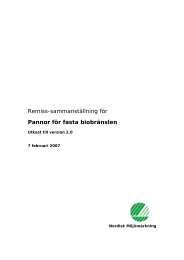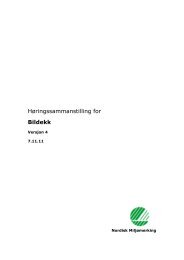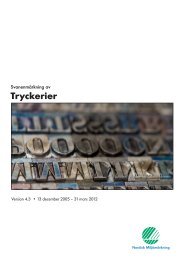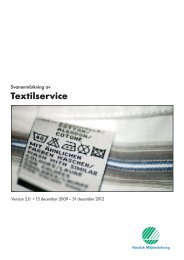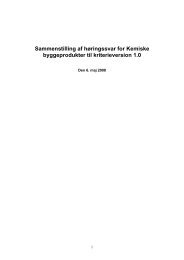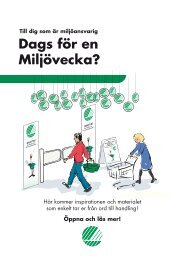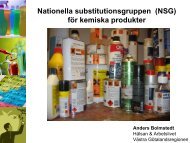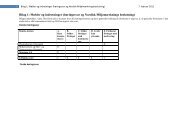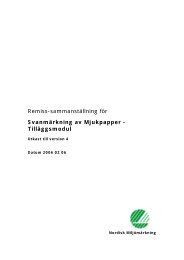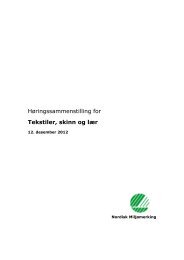Småhus, flerbostadshus och förskolebyggnader - Svanen
Småhus, flerbostadshus och förskolebyggnader - Svanen
Småhus, flerbostadshus och förskolebyggnader - Svanen
You also want an ePaper? Increase the reach of your titles
YUMPU automatically turns print PDFs into web optimized ePapers that Google loves.
estrict the use of zinc in building products.<br />
Nordisk Miljømerking<br />
Hus, leiligheter og barnehager 089/versjon 2<br />
Høringssammenstilling, oppdatert 10. august 2010<br />
Zinc is not classified as CMR (#O16 of the Nordic Ecolabelling document).<br />
Zinc is not a prohibited substance according to the criteria of the Nordic Ecolabelling<br />
document. It is an essential element needed for all life forms, from bacteria to man.<br />
Also, in addition to the Nordic Ecolabelling or the EU Flower Ecolabel, there are other<br />
highly regarded environmental labels that do not restrict the use of zinc. Those can be<br />
used in an ecolabelling scheme for sustainable building. Several types of schemes exist<br />
that all specify or will specify using building products having Environmental Product<br />
Declarations (EPDs), e.g. BREEAM in the UK, LEED in the US, ‘Démarche HQE’ in<br />
France. EPDs in accordance with ISO 14025 type III systematically present a<br />
multi-criteria and multi-stage approach, reflecting multiple aspects of products<br />
environmental profiles including results of Life Cycle Assessments.<br />
Comments from Nordic Ecolabelling<br />
Thank you for your comment. We would like to point out that the voluntary Nordic<br />
Ecolabelling scheme is free to have mote stringent requirements than the authorities<br />
based on concern about materials, even thought risk assessments do not lead to<br />
restrictions from the governments. We have altered the requirement and will not forbid<br />
zinc in this version of the criteria. Zink will be further assessed in the next revision.<br />
11. European Copper Institute and Scandinavian Copper Development Association<br />
The European Copper Institute objects to the proposed restriction on copper roofs and<br />
claddings. Our comments are based on knowledge related to the durability and recycling<br />
capacity of copper and the results from a comprehensive voluntary risk assessment<br />
initiative1 (see ECHA website:<br />
http://echa.europa.eu/chem_data/transit_measures/vrar_en.asp). This risk assessment,<br />
covering the production, use and end-of life aspects of the copper value chain, shows that<br />
the existing legislative framework generally safeguards Europe’s environment, the health<br />
of industry workers and the general public. The conclusions from the copper risk<br />
assessment do not support the need for additional risk reduction measures such as<br />
restricting the use of copper roofs and claddings.<br />
1 The assessment process was initiated by the copper industry in 2000 and endorsed by the EC competent<br />
authorities. The Italian Government’s Istituto Superiore di Sanità, agreed to act as the review country on<br />
behalf of the European Commission and the EU Member States. The risk assessment dossier has been<br />
agreed by the European Commission’s Technical Committee for New and Existing Substances and The<br />
European Commission’s Scientific Committee on Health and Environmental Risk (SCHER) performed a final<br />
evaluation and further endorsed the conclusions on the environmental and human health risk<br />
characterisations. In the course of the review process, the studies and results were extensively discussed<br />
also with Nordic authorities.<br />
114 (165)



